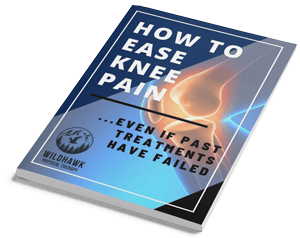
Introduction
Welcome to an enlightening exploration brought to you by WildHawk Physical Therapy. In this blog post, we delve into the realm of Zone 2 training—an often overlooked yet powerful approach that extends beyond fitness goals to promote longevity and optimal health. Whether you’re a seasoned athlete or someone embarking on a fitness journey, understanding the significance of Zone 2 training can redefine your approach to exercise and well-being.
Unveiling Zone 2 Training: A Holistic Perspective
Zone 2 training refers to a specific heart rate zone where exercise intensity is moderate, allowing individuals to sustain activity for extended periods. This zone corresponds to a heart rate range that falls between 60% and 70% of your maximum heart rate. While Zone 2 training has gained attention in athletic circles, its implications for overall health and longevity are equally profound.
Zone 2 Training and the Longevity Connection
- Aerobic Foundation: Building Endurance for Life
- Zone 2 training predominantly engages the aerobic energy system. This foundation-building approach enhances the cardiovascular system’s efficiency, promoting endurance and stamina.
- Improved aerobic capacity not only supports athletic performance but also contributes to everyday activities, fostering a sustained, energetic lifestyle throughout the lifespan.
- Mitochondrial Biogenesis: Energizing Cellular Health
- Zone 2 training stimulates mitochondrial biogenesis—the process of creating new mitochondria, the energy powerhouses of cells. Increased mitochondrial density is linked to improved cellular function and resilience.
- Mitochondrial health is crucial for combating oxidative stress, supporting cellular repair, and minimizing the impact of aging on overall well-being.
- Metabolic Flexibility: Adapting for Long-Term Health
- Engaging in Zone 2 training enhances metabolic flexibility, allowing the body to efficiently switch between utilizing fats and carbohydrates for energy.
- This metabolic adaptability has implications for weight management, blood sugar regulation, and reducing the risk of metabolic conditions, fostering long-term health.
Setting the Stage: Understanding Zone 2 Training

- Determining Your Zone 2: The Individualized Approach
- Identifying your Zone 2 heart rate requires understanding your maximum heart rate. A common method is subtracting your age from 220 and then calculating the 60% to 70% range.
- Individual variations exist, and factors such as fitness level, health status, and training history play a role in defining the optimal Zone 2 range.
- Choosing Activities for Zone 2: Beyond Traditional Boundaries
- Zone 2 training is not confined to a specific exercise modality. It can be incorporated into activities like brisk walking, cycling, swimming, or even low-impact aerobics.
- The key is maintaining a heart rate within the Zone 2 range, allowing for sustained effort without pushing into higher-intensity zones.
Unlocking the Longevity Benefits of Zone 2 Training
- Cardiovascular Health: Strengthening the Heart Muscle
- Zone 2 training induces a training effect on the heart, promoting the growth of cardiac muscle fibers and improving stroke volume—the amount of blood pumped with each heartbeat.
- A robust cardiovascular system reduces the risk of heart disease, a leading factor in longevity and overall health.
- Reducing Inflammation: A Balancing Act
- Chronic inflammation is implicated in various age-related diseases. Zone 2 training, with its moderate intensity, helps manage inflammation by promoting a balance between stress and recovery.
- A controlled inflammatory response supports the body’s ability to repair and regenerate, contributing to long-term health.
- Optimizing Body Composition: Balancing the Scale
- Zone 2 training taps into fat metabolism, making it an effective tool for weight management and body composition optimization.
- The emphasis on fat as a fuel source helps individuals maintain a healthy weight, reducing the risk of obesity-related conditions that can impact longevity.
Incorporating Zone 2 Training into Your Lifestyle
- Consistency: Small Steps, Big Impact
- Consistency is key when incorporating Zone 2 training into your routine. Start with manageable durations and gradually increase the time spent in this heart rate zone.
- Small, consistent efforts compound over time, yielding significant benefits for cardiovascular health and longevity.
- Variety and Enjoyment: Sustaining the Journey
- Zone 2 training doesn’t have to be monotonous. Explore a variety of activities to keep the experience enjoyable.
- Incorporating outdoor activities, group classes, or incorporating Zone 2 into your favorite form of exercise adds a layer of enjoyment that enhances long-term adherence.
Conclusion
In conclusion, Zone 2 training emerges as a holistic strategy with profound implications for longevity and optimal health. Beyond the realms of athletic performance, this moderate-intensity approach lays the foundation for a resilient cardiovascular system, cellular health, and metabolic adaptability. At WildHawk Physical Therapy located in Asheville, NC, we invite you to embrace the transformative potential of Zone 2 training—a journey that transcends fitness goals and paves the way for a vibrant, enduring, and healthful life.
Frequently Asked Questions:
Q: Can Zone 2 training be beneficial for individuals with existing health conditions?
A: Zone 2 training can be adapted to suit individuals with various health conditions. However, it’s crucial to consult with a healthcare professional or fitness expert to ensure the approach aligns with specific health considerations.
Q: How often should one engage in Zone 2 training for optimal benefits?
A: The frequency of Zone 2 training depends on individual goals, fitness levels, and overall health. Starting with 2-3 sessions per week and gradually progressing based on individual response is a reasonable approach.
Q: Is Zone 2 training suitable for beginners?
A: Yes, Zone 2 training is accessible for beginners. It provides a low-impact, sustainable entry point into cardiovascular exercise, allowing individuals to gradually build endurance and fitness levels.










